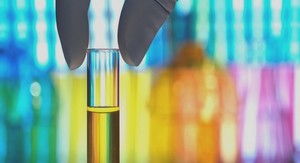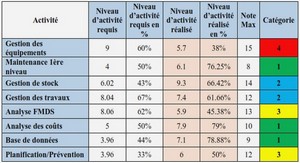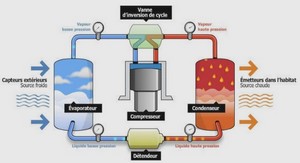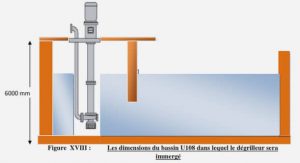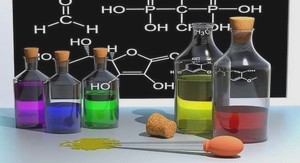CHEMICAL QUALITY ASSESSMENT OF VARIOUS BOTTLED WATER MARKETED IN ALGERIA AND THEIR HEALTH-RELATED EFFECTS
Mineral and spring waters
Natural mineral water is microbiologically wholesome water from an underground aquifer tapped via one or more natural or drilled wells, near from where it conditioned (JORA 45, 2004). These natural mineral waters may have therapeutic properties favorable to human health (JORA 45, JORA 51, FAO/WHO 1997). The only treatment allowed prior to bottling is to remove unstable components such as iron and sulphides and to (re) introduce carbon dioxide. According to the Codex Alimentarius, the natural mineral water is water clearly distinguishable from ordinary drinking water because: a) It is characterized by its content of certain mineral salts and their relative proportions and the presence of trace elements or of other constituents. b) It is obtained directly from natural or drilled sources from underground water bearing strata for which all possible precautions should be taken within the protected perimeters to avoid any pollution of, or external influence on, the chemical and physical qualities of natural mineral water. c) Of the constancy of its composition and the stability of its discharge and its temperature, due account being taken of the cycles of minor natural fluctuations; d) It is collected under conditions which guarantee the original microbiological purity and chemical composition of essential components. e) It is package close to the point of emergence of the source with particular hygienic precautions. f) It is not subjected to any treatment other than those permitted by this standard (Codex Alimentarius, 108-1981). Natural mineral water is characterized by being in its original state as having been preserved intact because of the underground origin of the water thereby being protected from all risk of pollution. The composition, temperature and other essential characteristics of natural mineral water must remain stable at source within the limits of natural fluctuation. An II. Bibliographic studies . 5 example of such is that they must not be affected by possible variations in the rate of flow. Mineral water can be gaseous or non-gaseous. In terms of its treatment; disinfections are not allowed, filtration or decanting. The addition or removal of carbon dioxide is the only treatment authorized. Mineral water has to contain a minimum of 250 mg/l of minerals. However local standard differ per country. Spring water is Water from a natural source that contains few minerals, In contrast to mineral water, which has to be bottled at the source; spring water may be transported first.
Genesis of water
The water was in the form of a hot vapor that stuck to tiny grains of rock which the aggregated to build up pebbles-an ultimately- a wet earth. Once the earth’s crust began to solidify. It would have belched out huge quantities of water during a period of rampant volcanic eruptions, as the saturated atmosphere cooled. It began to rain-and rain-and rain, filling the earth’s basins with the water that we inherit to this day (Drake, 2005; Waller, 2008). Based on the position of these planets inside the water vapor cloud, earth has attracted more water vapor then the other planets (DE Aquino, 2014). Water molecules have a simple structure: two hydrogen atoms bonded to one oxygen atom-H2O- This simple structure is responsible for water’s unique properties (see Appendix 1). The H-O-H bond angle in water is 104.3° (Gordalla et al., 2007). The reason for many of liquid water’s special properties originates from the water molecules consisting of dipoles that associate through intermolecular hydrogen bonds in its condensed phase (see figure 1) (Gordalla et al., 2007). II. Bibliographic studies .Figure 1: Geometry of the water molecule and energetically favored configuration of two molecules in condensed phase (Liquid) (Gordalla et al., 2007). 3.Cycle of water Another feature of water which is important for the hydrological cycle is its enthalpy of evaporation. Closely linked to this is the fugacity of water, which determines the amount of water that is converted into the gas phase and can be transported to the atmosphere (Gordalla et al., 2007). Due to its polar character, water is a good solvent for salts, polar organic compounds and gases. Within the hydrological cycle water directly interacts with various solid phases, such as dust, soil, rocks, and living organisms. As a consequence of ample contact between water and the atmosphere within the hydrological cycle. The components of the air, especially the gases nitrogen, oxygen, and carbon dioxide, will dissolve in water (Gordalla et al., 2007). 4.Physicochemical characterizations of water Due to its ability of forming intermolecular hydrogen bonds, water possesses a range of particular physicochemical properties which are of fundamental relevance for the matter and energy budgets of ecosystems. Water with its formula , is the only inorganic compound that exists naturally on earth in all three physical states of matter-gas, liquid, and solid physical state under d(O-H)INTRA a : 0.100nm d(O-O)INTER c : 0.289nm d(O-H)INTER b : 0.200nm d(H-H)INTER d : 0.240nm II. Bibliographic studies . natural conditions, and it is always on the move among them. Pure water is colorless, odorless, and tasteless (Gordalla et al., 2007). The heat regulation of organisms depends on the high heat capacity of water. It contributes, for example, to the maintenance of a constant body temperature in warmblooded organisms. Water, being a strong dielectric, water’s dielectric constant is one of the highest known for liquids is an excellent solvent for salts and gases, which are capable of solvolysis with subsequent dissociation (e.g. CO2) (Gordalla et al., 2007). It dissolves a variety of substances very effectively. This is one of the reasons why almost all biochemical reactions take place in aqueous solutions and why water is indispensable as a reaction medium for all metabolic processes in living cells (Gordalla, 2007). Natural waters are of widely diverse compositions depending upon their geologic and geographical origin (WHO, 2017). 5.Classification of mineral waters Waters are differentiated by their chemical composition (quantity and nature of minerals contained in ionic form), temperature and pH (Leeman, 2008; Richard, 1996) Natural mineral waters are classified in accordance to the geological, hydrogeological, physicochemical and microbiological criteria. Pharmacological, physiological, and clinical criteria are also considered if the natural properties of the water can be justified. The mineral and chemical contents of bottled natural mineral water are determined by the composition of the rocks from which it is extracted and by geochemical processes (Bartram & Pedley, 1996; Van der Aa, 2003).
Bibliographic studies
According to their composition
Mineral waters can be classify according of their composition, depends on the most dominant ion: Hardness: Soft, medium, highly mineralized; Sodium or calcium sulphide waters; Sulfated waters; Salinity; Sodium chloride water; Carbonated waters.etc. (Van der Aa, 2003; Diduch, 2011). 5.2. According to their temperature Temperature is also a parameter of classification of mineral waters: Hyperthermale waters, where its temperature exceed to 50 °C ; Mesothermal waters or thermals, where the temperature located between 35 °C & 50 °C ; Hypo-thermal waters, where the temperature is between 20°C & 35°C ; Cold waters, where the temperature is lower than 20 °C (Van der Aa, 2003; Diduch, 2011).
Content of specific constituents
Mineral waters with special mineralization, which have high concentration of trace-elements. For example; ferruginous waters, when it contains more than 20 mg/L of iron. 6. Standards of drinking-water Water can be admitted for consumption only when the concentration of its constituents does not exceed the norms. When these norms can be established by nutritional standards and the highest permissible levels limiting values in the case of harmful or potentially toxic substances have been taken into account.
Bibliographic studies
The Algerian standards of drinking-water
The aim of national drinking water laws and standards should be to ensure that the consumer enjoys safe potable water, not to shut down deficient water supplies. Effective control of drinking water quality is supported ideally by adequate legislation in each country will depend on national constitutional and other considerations. Algerian legislation gave a big importance to follow the water quality from the exploitation sites and its conditions into the bottling process and quality control of the final products. According to interminesterial Decree (2016), fixing the microbiological criteria of food. Table 1 below shown all the indicator bacteria must be tested in mineral and spring water during the process of quality control. Table 1: Bacteriological properties of mineral and spring waters. category Microorganisms/metabolites Sampling plan Microbiologic limits (ufc/g) n c m M Mineral water and spring water Escherichia coli 5 0 Absence in 250 ml Enterococci 5 0 Absence in 250 ml sulfite-reducing anaerobic spores 5 0 Absence in 250 ml Total coliforms 5 0 Absence in 250 ml Pseudomonas aerugenosa 5 0 Absence in 250 ml Where: m: number of germs present in one gram or milliliter of sample, which represent the value below which the water quality is considered to be satisfied; n: number of samples analyzed; M: number of germs present in one gram or milliliter of sample, which represent the value above which the water quality is considered to be unacceptable; II. Bibliographic studies . 00 c: maximum number of samples that may exceed “m” but below of “M” without rejected the batch. The physicochemical quality is determined in the Executive Decree 2014, Relating to the quality of drinking water, the parameters and the indicative values shown below in table 2. Table 2: Physicochemical parameters according to the Algerian executive Decree (2014). Parameter group Parameters Unities Limit values Chemical parameters Nitrate mg/L 50 Nitrite mg/L 0.2 arsenic µg/L 10 Plumb µg/L 10 Mercury µg/L 6 Organoleptic parameters Color mg/L platine 15 Turbidity NTU 5 Odor at 25°C Dilution rate 4 Taste at 25°C Dilution rate 4 Physicochemical parameters relating with the natural structure of waters Alkalinity mg/L 65 minimum Calcium mg/L 200 Chloride mg/L 500 pH / ≥ 6.5 and ≤ 9 Conductivity at 20°C µS/cm 2800 Total hardness mg/L 500 Total iron mg/L 0.3 Manganese µg/L 50 Phosphore mg/L 5 Potassium mg/L 12 Sodium mg/L 200 Sulfate mg/L 400 Temperature °C 25 II. Bibliographic studies.
The international standards of drinking-water
The world health organization ken to keep up to date the guidelines for drinkingwater quality, for primary purpose which is the protection of public health. In microbiological quality the use of indicator organisms in monitoring is indicated, they must be absent in 100 ml (for E.coli and aerobic mesophilic count / heterotrophic plate count) (WHO, 2017).
II. BIBLIOGRAPHIC STUDIES |


